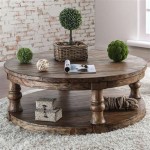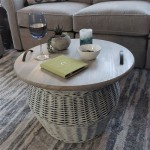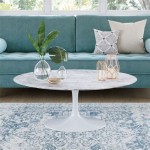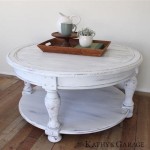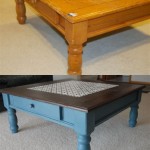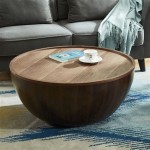Contemporary Dining Table Centerpiece Ideas
The dining table centerpiece serves as a focal point, enhancing the overall ambiance of a dining space. In contemporary design, centerpieces often prioritize simplicity, functionality, and visual appeal, integrating effortlessly with modern aesthetics. This article explores several contemporary dining table centerpiece ideas, focusing on materials, styles, and arrangements that complement modern dining room designs.
Geometric Arrangements
Geometric forms are a staple in contemporary design, and incorporating geometric elements into a dining table centerpiece provides a structured and visually engaging aesthetic. This approach often involves using objects with clean lines, precise angles, and symmetrical or asymmetrical arrangements. The use of geometric shapes can range from subtle accents to bold, eye-catching statements.
One popular option is to utilize a set of geometric vases. These vases, crafted from materials such as ceramic, metal, or glass, can be arranged in a linear fashion or clustered together. The vases can be filled with minimalist floral arrangements, such as single-stemmed orchids, calla lilies, or sculptural branches. Alternatively, the vases can be left empty as standalone decorative pieces, emphasizing their geometric form and material texture.
Another approach involves using geometric sculptures as the centerpiece. These sculptures can be made of various materials, including metal, wood, or stone. The sculpture’s design should align with the overall aesthetic of the dining room. For example, a metal sculpture with intersecting lines can bring a modern, industrial feel, while a wooden sculpture with rounded edges can add a touch of warmth and organic texture. Placement is key; the sculpture should be positioned centrally on the table, allowing enough space for diners to interact comfortably.
Geometric trays or platforms can also serve as the foundation for a contemporary centerpiece. These trays, often made of materials like marble, concrete, or acrylic, provide a stable and stylish base for arranging smaller decorative items. Items like candles, small potted plants, or decorative stones can be grouped on the tray, creating a cohesive and visually appealing display. The tray helps define the centerpiece area and prevents the arrangement from feeling scattered or disorganized.
The color palette for geometric centerpieces should be carefully considered to maintain a contemporary aesthetic. Neutral tones, such as white, gray, and black, are often preferred, as they create a sense of sophistication and allow the geometric forms to stand out. However, incorporating a pop of color, such as a vibrant blue or a deep red, can add visual interest and create a focal point. The color should be used sparingly and strategically, ensuring it complements the overall color scheme of the dining room.
Natural and Organic Elements
Bringing natural and organic elements into a contemporary dining table centerpiece adds warmth, texture, and a sense of connection to the outdoors. This approach often involves using materials like wood, stone, greenery, and natural fibers to create a visually appealing and inviting display. The key is to incorporate these elements in a way that complements the clean lines and minimalist aesthetic of contemporary design.
One popular option is to create a centerpiece using a wooden plank or a piece of driftwood. The wood can be left in its natural state, showcasing its unique grain patterns and textures, or it can be stained or painted to match the dining room's color scheme. The wooden plank can then be used as a base for arranging candles, small potted plants, or decorative stones. The natural texture of the wood adds a touch of warmth and rustic charm to the contemporary setting.
Another approach involves using a collection of stones or pebbles as the centerpiece. The stones can be arranged in a shallow bowl or tray, creating a visually interesting and tactile display. The stones can be of varying sizes, shapes, and colors, adding visual depth and complexity. Alternatively, the stones can be combined with other natural elements, such as moss, succulents, or small branches, to create a more elaborate and diverse centerpiece.
Greenery is another essential element in creating a natural and organic centerpiece. Succulents, air plants, and small potted herbs are excellent choices, as they are low-maintenance and add a touch of greenery to the dining table. These plants can be arranged in a variety of containers, such as ceramic pots, glass terrariums, or metal bowls. The greenery can also be incorporated into floral arrangements, adding a touch of freshness and vibrancy. Single-stemmed flowers in minimalist vases also create a contemporary look with natural elements.
When incorporating natural elements into a contemporary centerpiece, it is important to maintain a sense of balance and simplicity. Avoid overcrowding the table with too many items, and focus on creating a visually appealing and harmonious arrangement. The color palette should be natural and earthy, with tones of green, brown, and gray dominating. Incorporating a pop of color, such as a vibrant flower or a colorful stone, can add visual interest, but it should be used sparingly and strategically.
Minimalist Candle Arrangements
Candle arrangements are a timeless and elegant addition to any dining table centerpiece, and they can be particularly effective in contemporary settings. Minimalist candle arrangements prioritize simplicity, clean lines, and a focus on the illuminating quality of the candles themselves. This approach often involves using candles of varying heights and shapes, arranged in a way that creates a visually appealing and harmonious display. The key is to keep the arrangement simple and uncluttered, allowing the candles to be the main focal point.
One popular option is to use a collection of candlesticks of varying heights and styles. The candlesticks can be made of various materials, such as metal, glass, or ceramic. The candlesticks should be arranged in a linear fashion or clustered together, creating a visual hierarchy. Tapered candles in neutral colors, such as white, gray, or black, are often preferred, as they complement the minimalist aesthetic. The varying heights of the candlesticks add visual interest and create a dynamic display.
Another approach involves using a collection of pillar candles of varying sizes. The pillar candles can be placed directly on the table or arranged on a decorative tray or platform. The pillar candles should be of varying heights, creating a visual hierarchy. The candles can be arranged in a linear fashion or clustered together, depending on the size and shape of the table. The warm glow of the pillar candles creates a cozy and inviting atmosphere, perfect for intimate dinners or special occasions.
Floating candles in glass bowls or vases are another elegant and minimalist option. The candles can be placed in clear glass bowls filled with water, creating a reflective and ethereal effect. The floating candles can be arranged individually or grouped together, depending on the size of the table. Adding a few decorative stones or petals to the water can enhance the visual appeal of the arrangement. The soft glow of the floating candles creates a romantic and serene atmosphere.
When creating a minimalist candle arrangement, it is important to consider the placement of the candles in relation to other elements on the table. The candles should be positioned in a way that does not obstruct the view of diners or interfere with the placement of food and drinks. The candles should also be placed away from flammable materials, such as napkins or tablecloths. Safety should always be a priority when working with candles.
The color palette for minimalist candle arrangements should be simple and understated. Neutral tones, such as white, gray, and black, are often preferred, as they create a sense of sophistication and elegance. However, incorporating a pop of color, such as a deep red or a metallic gold, can add visual interest and create a focal point. The color should be used sparingly and strategically, ensuring it complements the overall aesthetic of the dining room. Scented candles can also be incorporated to enhance the ambiance of the dining space.
By carefully considering the materials, styles, and arrangements, contemporary dining table centerpieces can be created that enhance the aesthetic appeal and create a welcoming dining environment.

16 Modern Dining Table Centerpieces You Can Use Year Round

Spice Up Your Dining Table With Modern Centerpieces The Seattle Times

Dining Room Table Centerpieces

80 Best Dining Room Ideas And Decorating Tips

Modern Dining Room Ideas And Trends For 2024 Jane At Home

Luxury Dining Room Ideas

Dining Room Table Centerpieces

25 Elegant Dining Table Centerpiece Ideas

Modern Dining Room Ideas And Trends For 2024 Jane At Home

Traditional Dining Design Ideas Pictures Remodel And Decor Elegant Room Centerpiece Small
Related Posts

